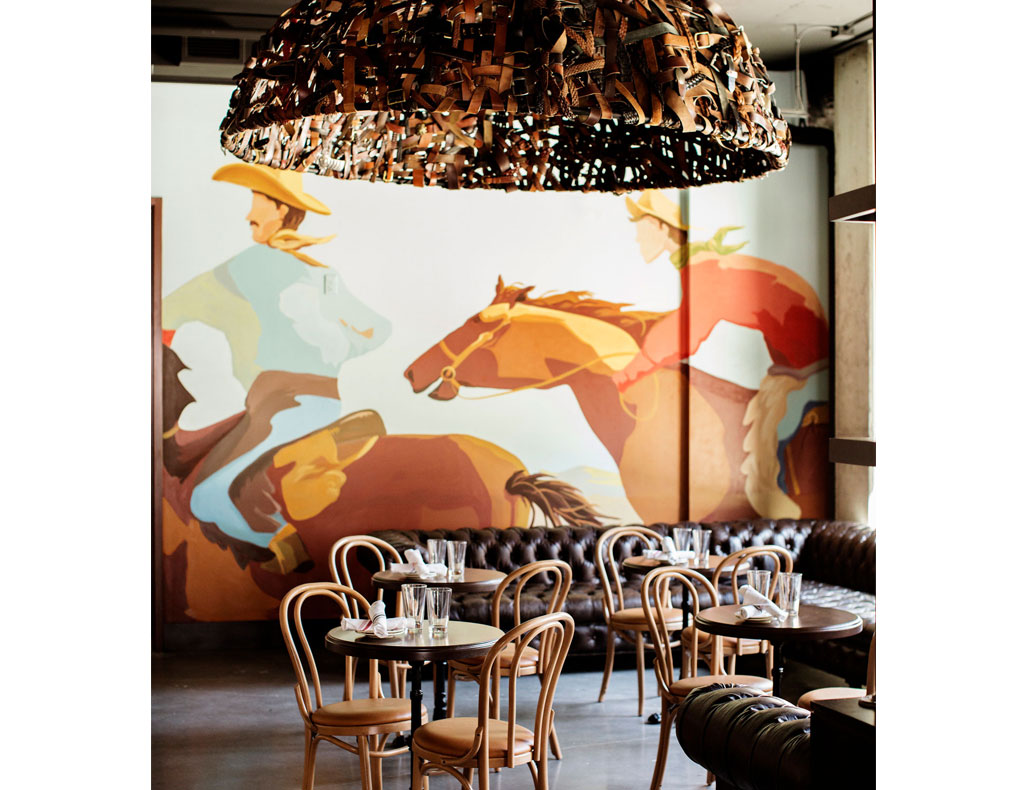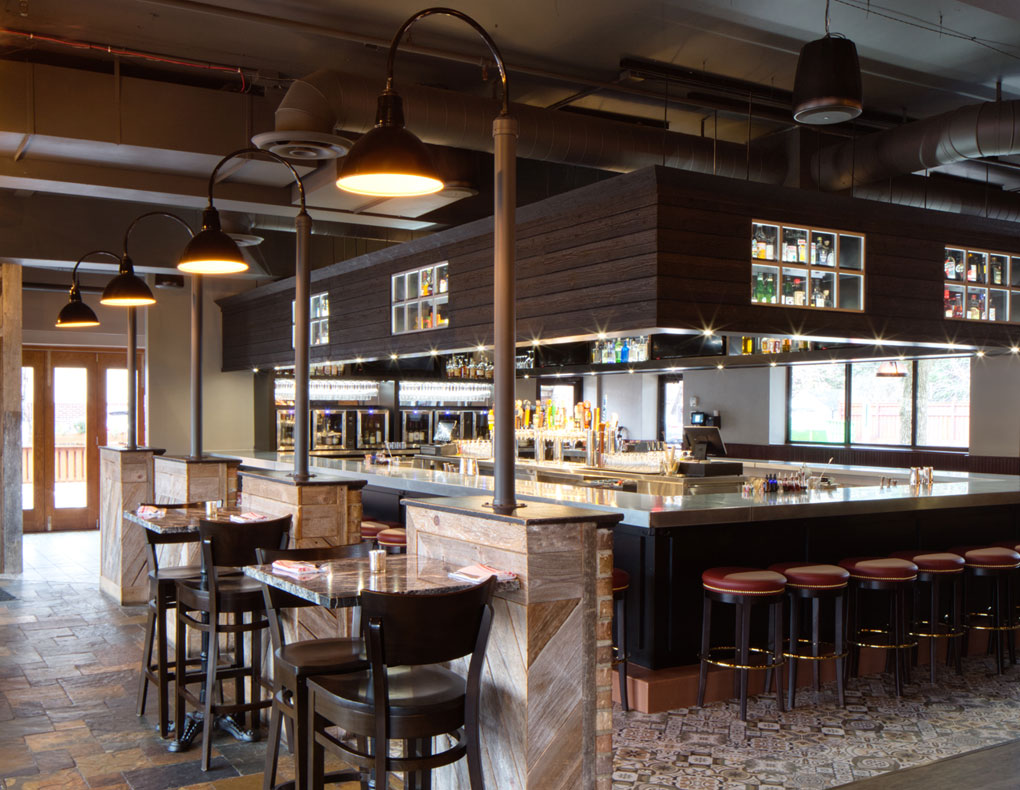Walk into any thriving Twin Cities restaurant right now.
What separates the packed places from the empty ones?
The food matters, sure.
But after 20+ years designing restaurant interiors, I can tell you another important difference.
It’s whether the space makes people want to stay or leave.
Consider this: restaurants typically aim for a quarterly ROI of around 10%, with the industry averaging 11.13% in 2024 according to recent restaurant statistics.
Design plays a crucial role in achieving these numbers.
It’s about creating experiences that actually drive business success. It’s about modern restaurant interior design.

The Real Cost of Getting Design Wrong
Here’s what keeps restaurant owners up at night.
You need design that grabs attention today but won’t look dated next year.
It’s this constant balancing act between trendy and timeless.
I recently visited a Minneapolis restaurant that invested heavily in a complete redesign just a few years ago.
Today?
Those once-trendy design elements already feel dated.
The owner told me they’re planning another renovation.
That’s the trap.
Chase every trend, and you’ll renovate every few years.
At the same time, if you ignore those trends completely, your competition might steal your customers.
What Actually Works in Restaurant Design Today
Modern restaurant design requires more than scrolling through Instagram for inspiration.
The most successful spaces blend three critical elements:
Functional Flow
Your layout should guide customers naturally from entrance to table.
No awkward bottlenecks at the host stand.
No servers weaving through cramped aisles.
Research shows that optimized traffic flow can significantly reduce server walking distances during peak hours.
Sensory Experience
Lighting that adapts throughout service.
Acoustic treatments that allow conversation without shouting.
Temperature zones that keep everyone comfortable.
These details matter more than any trendy detail.
Flexible Spaces
Your Tuesday night regulars want intimacy.
Your Saturday party of 12 needs energy.
Smart design accommodates both without moving furniture.
The Money Side Nobody Talks About
Let me share some numbers that might surprise you.
LED lighting uses at least 75% less energy than traditional incandescent bulbs, according to the U.S. Department of Energy.
For restaurants, this translates to significant cost savings.
Quality commercial-grade flooring lasts significantly longer than residential options.
But here’s what really matters:
Well-designed restaurants see increased dwell times and higher average order values.
Longer dining times mean higher check averages.
Higher checks mean better tips.
Better tips mean happier staff.
It’s all connected!
2025’s Design Direction (Without the Hype)

This year’s aesthetic shifts toward what I call “sophisticated comfort.”
And that makes sense!
After years of uncertainty, people crave spaces that feel both special and safe.
Natural Elements Take Over
Living walls aren’t just pretty.
Research shows that biophilic design elements can significantly reduce stress levels and improve well-being.
This approach works beautifully in Japanese restaurant interior design, where nature plays a crucial cultural role.
We’re seeing:
- Preserved moss installations requiring zero maintenance
- Natural stone that ages beautifully
- Warm wood tones that hide wear
- Maximized natural light through strategic window placement
Colors That Actually Work
Forget stark white minimalism.
The palette now includes:
- Rich taupe for depth without darkness
- Soft camel adding warmth
- Warm beige as your foundation
- Muted terracotta for personality
Curves Replace Corners
People want comfort.
Sharp edges don’t say “relax and stay awhile.”
On the other hand, round dining booths encourage conversation.
Arched doorways create visual flow.
Curved bar counters feel more social.
This principle extends to commercial open kitchen restaurant design, where rounded corners improve both safety and flow.
Timeless Elements Worth Your Investment
Some design choices prove their worth over decades.
Focus your budget here first:
Flooring That Lasts
Medium-tone hardwood in classic patterns like herringbone.
Why?
Commercial hardwood can last 50+ years with proper maintenance, significantly longer than trendy alternatives.
Wall Treatments That Endure
Build from warm neutrals, and then add drama with deeper accents you can change.
Quality wallcoverings hide the inevitable scuffs and scratches of restaurant life.
Furniture That Performs
Commercial-grade doesn’t mean ugly.
Look for:
- Solid wood construction with reinforced joints
- Stain-resistant fabrics that actually clean
- Classic silhouettes that work with changing decor
Real Twin Cities Transformations

We’ve seen neighborhood spots completely transform through strategic design.
Local restaurants have overcome challenges with cramped, dark interiors by implementing smart design solutions.
Opening up layouts improves traffic flow.
Adding acoustic treatments enhances the dining atmosphere.
Strategic seating arrangements maximize capacity without crowding.
These renovations showcase how strategic restaurant design can revitalize businesses.
Thoughtful design attracts modern diners while maintaining character, and the sweet spot is where you can balance modern amenities with enduring features.
This approach becomes especially valuable when considering sustainable restaurant design principles emphasizing longevity.
Understanding how to maximize ROI with expert commercial renovation tips becomes crucial for transformations.
Making Smart Design Decisions
Before you call any designer, do this homework:
Map Your Current Reality
- Track traffic patterns during your busiest service
- Note where natural light hits throughout the day
- Document what architectural features to preserve
Choose Materials Wisely
Skip residential-grade anything.
You need:
- Porcelain or sealed hardwood flooring
- Commercial fabric treatments
- Heat-resistant table surfaces
- Washable wall finishes
Phase Your Investment
You don’t need to renovate everything at once.
Start with:
- Lighting upgrades for immediate impact
- Fresh paint in strategic areas
- Reupholstering existing furniture
- Adding architectural details gradually
When planning comprehensive projects, consider how interior design integrates with commercial building architectural design in 2025 principles.
The Modern Classic Sweet Spot
From what I’ve seen, the most successful restaurant designs blend timeless architecture with contemporary touches.
Traditional crown molding painted in unexpected colors.
Classic Chesterfield banquettes updated in performance velvet.
Windsor chairs reimagined in matte black steel.
And really, this combination gives you flexibility, where you can swap out accessories and artwork to stay current.
Keep your foundational elements classic.
What This Means for Your Restaurant

Every restaurant tells a story through its design.
The question becomes: what story are you telling?
Your regular customers notice when you invest in their experience, and they’ll appreciate better acoustics that allow for conversation.
They’ll also almost always love lighting that makes everyone look good, and they’ll return to spaces that feel both familiar and fresh.
The truth is, great restaurant design balances multiple needs.
Your servers need efficiency, your guests want comfort, and your bottom line requires durability.
Expertise matters when you’re trying to find that balance.
Moving Forward
Creating memorable dining experiences requires more than following design magazines.
It demands understanding how space affects behavior, how materials perform under pressure, and how trends evolve while principles endure.
Smart operators know this: invest in quality foundations, then layer in personality.
This strategy maximizes both immediate appeal and long-term value.
Ready to reimagine your restaurant’s potential?
Studio M Architects brings 20+ years restaurant design expertise to every project.
We understand unique Twin Cities market challenges and opportunities.
By balancing trendy elements with enduring principles, we maximize functionality and aesthetic appeal.
Book a free interior design consultation with our experienced team.
We’ll discuss your vision, assess your space, and develop customized plans helping your restaurant thrive.

Recent Comments